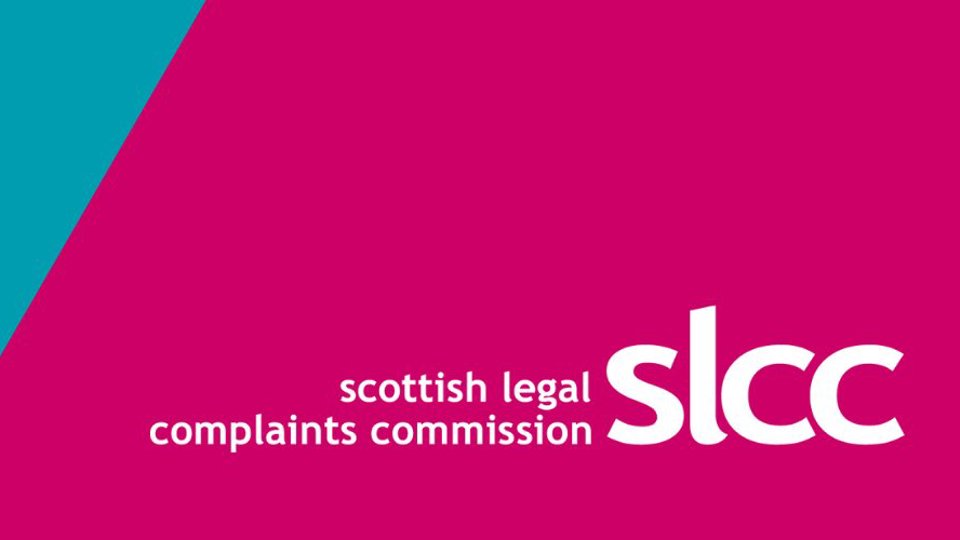A swift sift? SLCC explains its oft-misunderstood role following Michelle Mone case decision

Earlier this year the Court of Session dismissed an appeal challenging a decision by the Scottish Legal Complaints Commission (SLCC). The SLCC’s Vicky Crichton explains the body’s often-misunderstood ‘sifting function’ and its role in rejecting or referring complaints.
The SLCC’s sifting function
We know that complaints can be stressful, so we appreciate that when a complaint is made practitioners want to have it dealt with as swiftly as possible. It’s understandable to hope that the SLCC will sift out as much of the complaint as possible at the start. But the bar for a complaint to be investigated is low and a decision to investigate does not mean the complaint will be upheld.
The statute that sets out the SLCC’s functions includes, at Section 2, details of a series of ‘preliminary steps’ – the decisions and actions the SLCC must take on receipt of a complaint.
These preliminary steps, described by both Parliament and the courts as a sifting function or quick sift, are often among the most misunderstood and frequently challenged decisions we make.
Valuable insight from a court opinion
On 12 August the Inner House of the Court of Session published its opinion on an appeal against one of these decisions. It helpfully sets out its views on the limited scope of what it describes as our “sifting function”.
We believe this is helpful reading for practitioners. We know from the feedback we receive that this view isn’t always well understood. We often hear practitioners say more complaints should be sifted out or rejected, and some feel that this decision is a comment on the merits of the complaint or the likelihood of it being upheld.
However, all this decision confirms is that having taken those preliminary steps, we are either rejecting the complaint – because it meets one of a small number of tightly drawn criteria – or, if that is not the case, that the complaint will be investigated.
The court opinion (at Sections 41-43) draws together the relevant legislation and previous decisions, which provides helpful clarity for all stakeholders about the SLCC’s role and the nature of the decision it takes when sifting complaints.
This includes Lord Malcolm’s comment (LSS v Scottish Legal Complaints Commission [2010] CSIH 79, 2011 SC 94 at para 49) that:
“The statutory formula […] allows the sifting of complaints which, on their face, are obviously unworthy of any consideration or investigation by the professional body. It covers hopeless complaints where it is clear that further inquiries could make no difference. A conclusion that a complaint is unlikely to succeed would not meet the test for dismissal by the commission at the preliminary stage...”
The opinion also paraphrases Lord Malcolm’s view set out in that case that:
“...in determining whether or not a complaint was frivolous, vexatious or wholly without merit, any inquiries carried out by the Commission should be no more than was needed to answer that question”.
And Lord Kingarth’s comments that:
“...the Commission would need to obtain at least basic information on the basis on which a complaint is made, and this would vary from case to case, but [this is] a very low level of investigation, amounting to little more than seeking to understand the basis of the complaint”.
In addition, the opinion restates Lord Pentland’s comments (AS v Scottish Legal Complaints Commission, supra, in giving the opinion of an Extra Division) where he drew together principles set out in previous decisions, including:
“…it is only where referring a complaint to the professional body would be a waste of time because the complaint is totally without merit that the Commission should dismiss it as ineligible” (McSparran McCormick v Scottish Legal Complaints Commission, para 58).
“…the test of ‘totally without merit’ contained in sec 6(1)(b) of the 2007 Act is a high one. It permits the Commission to sift out complaints which, on their face, are obviously unworthy of any consideration or investigation by the professional body; that means hopeless complaints in which it is clear that further investigation by the professional body could make no difference. In other words, the threshold that a complaint requires to cross before the Commission should refer it for investigation by the professional body is a very low one” (Law Society of Scotland v Scottish Legal Complaints Commission, para 49).
Our view and approach
In recent years, challenges to these decisions have resulted in significant case law on just these issues. We believe the court has been clear in its view that the bar for rejecting a complaint is high, and therefore, the threshold that a complaint requires to cross to be referred for investigation is low. The court has been particularly clear on this in relation to conduct complaints, where it is for the relevant professional organisation to investigate the complaints.
It’s also clear that the enquiries we’re required to make at this early stage are limited and we should focus on making a swift sift of the whole complaint to decide if it meets the test to be rejected.
Drawing on this guidance, we have been testing new approaches to make this initial sift swifter and less onerous, and to ensure complaints move quickly to being resolved, investigated or dismissed. For practitioners familiar with our process, some cases may look a little different.
We think there will be benefits for practitioners, complainers and the regulators who investigate conduct complaints, but we’d be keen to hear feedback from those engaging with the complaints process.
We believe these changes will make a substantive difference to the efficiency of the complaints process and will help provide a stepping stone towards the changes set out in the Regulation of Legal Services (Scotland) Act 2025, which we are now working towards implementing.
Guidance for practitioners
What none of this will change is our message to practitioners that the best way to deal with a complaint is by engaging with the complaint and the complainer, exploring their concerns and opportunities for resolution and responding openly to any issues raised. Similarly, the best time to deal with a complaint is when someone makes that first expression of dissatisfaction, well before it reaches the SLCC.
If you want to know more about this, we offer a full suite of guidance, advice and training and we’d be happy to talk to you about bespoke options for your firm or association.
Written by Vicky Crichton, Director of Public Policy, Scottish Legal Complaints Commission







